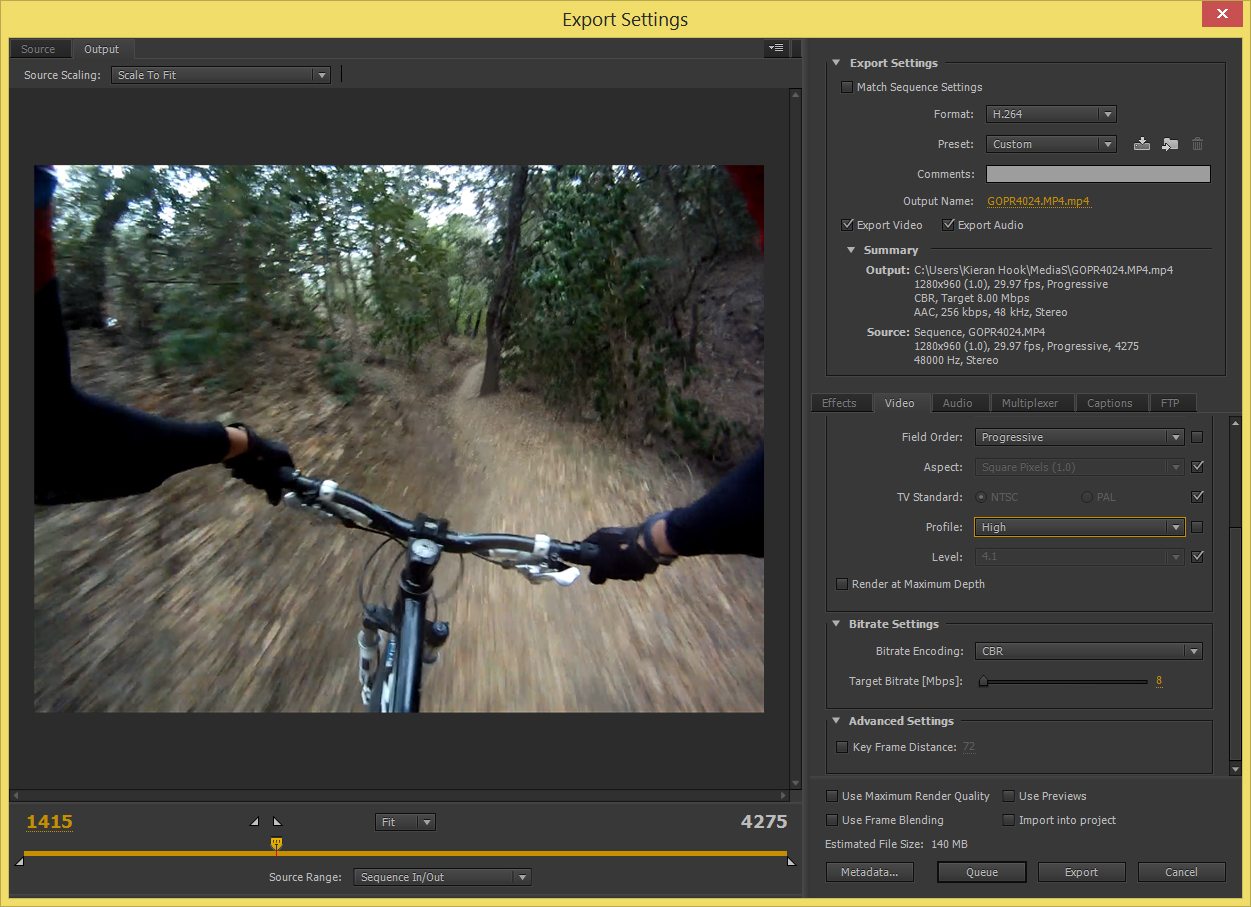
- Best export settings for youtube premiere pro cc how to#
- Best export settings for youtube premiere pro cc 1080p#
- Best export settings for youtube premiere pro cc tv#
If your format/codec wasn’t preset to H.264, simply select it from the drop down list and you’ll be set. We won’t go into the explanation of what codecs are or what each one does, as an entire book could be written on that but just keep in mind your various options in this dialog list. YouTube and other video sharing sites specify H.264 to be the best option for web video. This is the defacto standard for most video today, and for DSLR shooters is the native codec that clips are shot in. Step 3 – Codec/Format SelectionĪs mentioned in the previous step, you’re going to want to use H.264 codec for streaming video. The last important area to look at is the “Format” drop down box, right now it’s set to H.264 which is essential. Additionally if you want to play it safe, check the “Match Sequence Settings” check box to make everything work together.
Best export settings for youtube premiere pro cc 1080p#
Another important note is that if you shot in 720p, do not try to force the output to 1080p (1920×1080) because it will just distort the video further if a user selects “1080p” on YouTube’s playback quality. You’re going to want to pay attention to this and make sure they match the same settings for both output and source. Your source settings are what you selected when you first started editing the sequence(s) and usually match the camera settings that you shot on. Here you will find a summary of your output settings and your source settings. This is the first portion of the dialog box that you will encounter and it is perhaps the most important. Simply go to File > Export > Media or you can hit Command/CNTRL + M to bring up the dialog box so we can export our project. Step 1 – Export Mediaįirst, we’re going to need to call up the export media dialog box in order to get started. However, these settings should work in virtually any production environment whether the footage was shot on iPhone, DSLR, XD-CAM, or any other format. Keep in mind that this guide is a general guide and may or may not need to be altered depending on your pre-production settings and other various variables. In this post, I’ll cover each step to exporting an HD video in 1080p to YouTube in detail below.

Not to mention that certain codecs just don’t play nicely with video streaming. Keep in mind that the wrong codec, or too large of a file size can greatly hinder your video’s stream-ability on YouTube and other video sharing sites.
Best export settings for youtube premiere pro cc tv#
Unless your projects are for large scaled distribution on TV or in theaters, there’s no reason why you shouldn’t have your videos on a YouTube channel.īut before you decide uploading that massive wedding video that was meant to be played back on DVD, you should really reconsider how it will play out on the web, where streaming speed is king. This means that if your videos/films aren’t on YouTube yet then chances are you’re not reaching the audience that you could. Love it or hate it, YouTube has quickly become the go to place to consume video content. The number of presets in CC has been expanded, but you always want to use that as a starting point and then customize from there.YouTube…it’s the most popular video destination in the world, the second most popular search engine (behind Google), and the third most popular website (behind Google and Facebook). While he is using Premiere Pro CS6, these same settings are valid for Premiere Pro CC. Vimeo user Gabriel Mays put together a great video that goes through the process of exporting your video when using Adobe Premiere Pro. Lastly, ensure that your audio is exporting using the ACC-LC codec at a data rate of 320 kbs and a sample rate of 48 kHz.

Next, let’s look at what the process of exporting looks like through Adobe Premiere Pro CC, Avid Media Composer, and Final Cut Pro X. Standard Definition (16:9 aspect ratio) 640 x 360 px.Standard Definition (4:3 aspect ratio) 640 x 480 px.In addition to the codec setting, Vimeo recommends keeping your frame rate between 24 and 30 FPS. Also be sure, if applicable, to set your bitrate to at least:īe sure to follow Vimeo’s guideline for resolution, which covers SD and HD video. Another suggestion is to choose the High Profile H.264 setting instead of the standard setting when uploading HD video. At present, Vimeo does not accept G2M2, G2M3, and Canopus HQ codecs. While Vimeo accepts most major video codecs, they recommend using H.264 for best results. With so many users, you need to make sure your work stands out, and the following guidelines will help guarantee that your next exported video is the best quality it can be. As of 2015, Vimeo has 25 million users with a viewership that extends to 170 million people world wide.

Vimeo is no longer that small community catered toward indie filmmakers.
Best export settings for youtube premiere pro cc how to#
Increase your workflow knowledge (and build your audience) with this guide on how to properly export video for Vimeo.


 0 kommentar(er)
0 kommentar(er)
